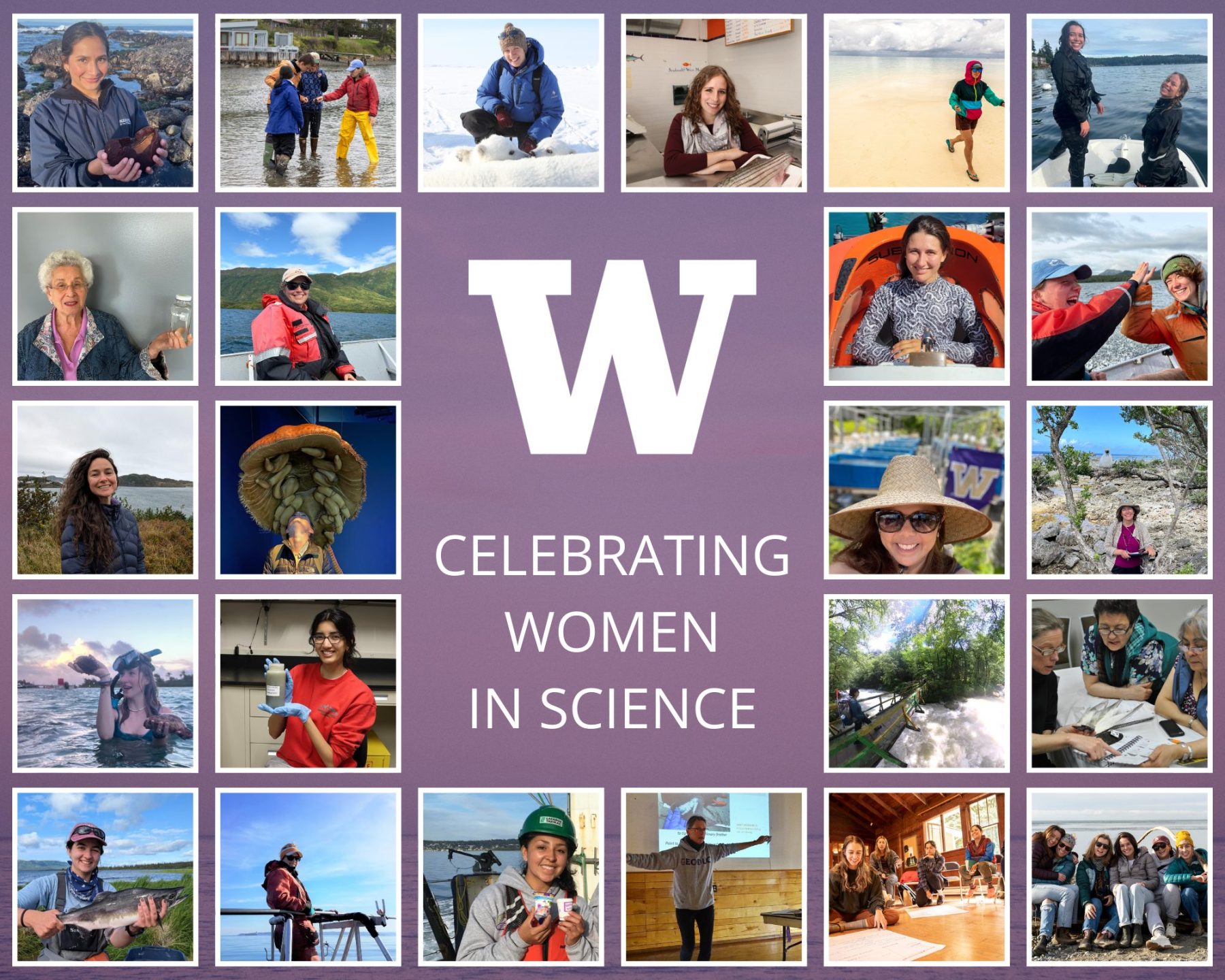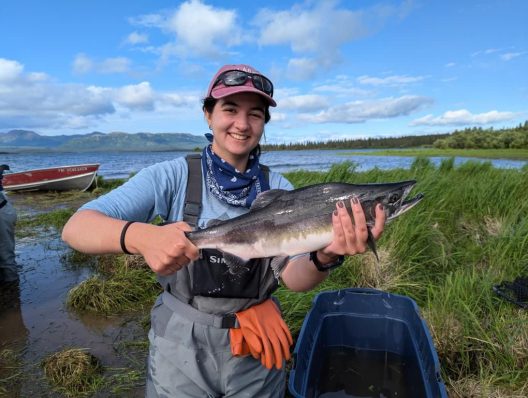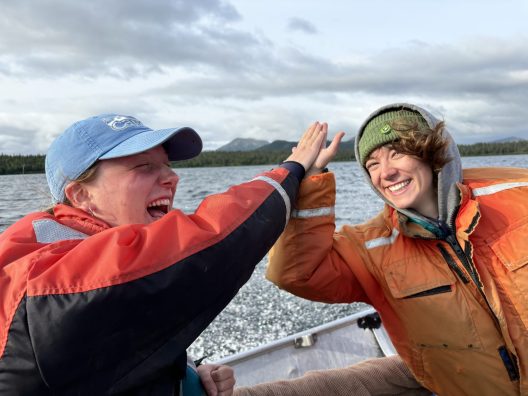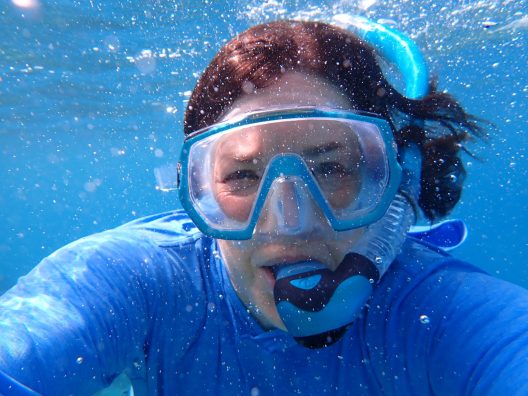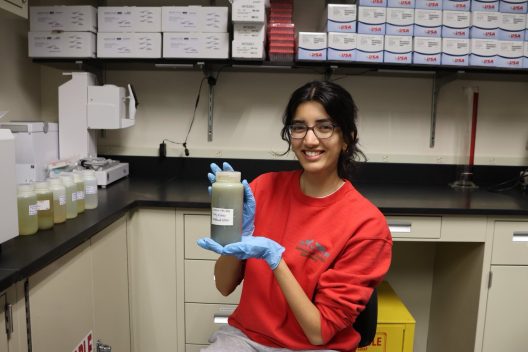Celebrating Women in Science
10 years ago, the UN declared 11 February as the International Day of Women and Girls in Science. On this 10th anniversary at the University of Washington, we’re celebrating our women in aquatic and marine science: women who are leaders in their fields, women who are aspiring to be the next generation of fisheries scientists and marine biologists, women who are uplifting and supporting other women in science.
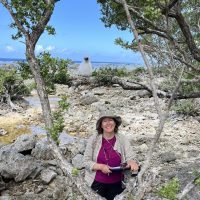
At the School of Aquatic and Fishery Sciences and Marine Biology, one of the aspects we’re celebrating is how many female faculty and research program leaders we have teaching the new cohorts of students who join our programs each year. “Even as recently as 50 years ago, there were few, if any, women who were leading research programs in universities and government agencies. If it weren’t for a lot of women, and men, who thought that should change, I wouldn’t be where I am today,” said Sarah Converse, Associate Professor and Unit Leader at the Washington Cooperative Fish and Wildlife Research Unit (WACFWRU). “I try to remember that and to be thankful for those leaders.”
Speaking with researchers and students — from technicians and postdocs to graduate students and undergraduates — the decision to pursue a career in science has been inspired by a myriad of reasons, many of them other women. “I was inspired by my grandmother. I remember falling in love with the field the first time I looked at mosquito larvae from my backyard using a kid’s microscope my grandma bought me and my brothers,” shared Callie Murakami, a SAFS undergraduate. For freshwater ecologist and wildlife biologist, and postdoc as SAFS, Aashna Sharma, her mother was her inspiration. “She is a woman in science, though her circumstances didn’t allow her to pursue a career as a scientist. Instead, she became a science teacher and my role model, and her passion for teaching and unwavering curiosity shaped my own love for science and my determination to pursue it as a profession.”
- Callie Murakami, undergraduate researcher in aquatic science.
- Naomi Prahl and Emma Meyer, aspiring salmon ecologists.
For others, science was the answer to curiosity. “Science provided me with the perfect environment to explore my curiosity, offering endless opportunities for discovery and learning,” said Raquel Ruiz Diaz, a fisheries scientist. “The idea that my work could also make a meaningful difference is both motivating and rewarding.” For Marjorie Wonham, a marine ecologist and invertebrate zoologist, and Associate Teaching Faculty, she was hooked the first time she dissected a sea cucumber and encountered its technicolor insides: “Scientific research and teaching are a heady combination of inquiry and surprise, and what they reveal to us about the workings of the natural world is nothing short of incredible.”
So what does it mean to be a woman in science in 2025? “It means to believe in myself and have no limits,” said undergraduate marine biologist, April Morrow. “It’s to acknowledge that a diverse array of perspectives and backgrounds facilitates better science, research, community, and life,” shared Marine Biologist student, Clara Kreutziger. “I’m so grateful to my supervisor for her genuine enthusiasm, reassurance, and support in my educational and professional journey, and I’m inspired to be similarly uplifting to all those around me,” said Mugdha Chiplunkar, a sophomore studying Marine Biology.
- Marjorie Wonham, Associate Teaching Faculty, in Moorea.
- Mugdha Chiplunkar, Marine Biology sophomore.
Claire Vaage, a freshwater ecologist and graduate student at SAFS had a powerful message: “My innate interests have led me into spaces where my identity, as a woman, incites a sense of shock. A passion for mountain biking led me to work as the only female bicycle mechanic in a shop during my undergrad. A drive for political action brought me to represent my peers, and one of only a few women, in the Idaho State Capitol. A love for aquatic ecosystems propelled me to where I am now: SAFS. Representation and mutual support from fellow women granted me the tenacity to not only enter into, but lead, in these spaces. To be a woman in science is to lift while I climb and shock people while I am at it.”
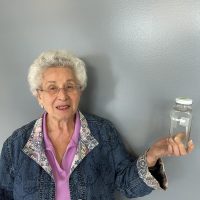
The future for science should be one of inclusivity — for all. Julia Parrish, Professor and Associate Dean for the UW College of the Environment, shared why inclusion should extend beyond the scientific community. “I believe that science is for everyone and should include everyone. Working for 30 years in citizen science has taught me that non-scientists are every bit as good at careful observation, quantitative data collection, and deduction. I want science to work more on tearing down the walls between science and society, to accept broader ways of knowing,” Julia said. “That would make science not only more approachable, but also more fun.”
This theme of inclusion and diversity was echoed by Marjorie Wonham: “STEM fields need to continue to actively foster and welcome diversity in all its beautiful forms. The social, creative, fundamental, applied, and inter- and transdisciplinary aspects of science are enhanced by the skills and perspectives of students and practitioners spanning and sharing about the dimensions of human diversity. The same holds for society.”
“I would like to see more women in higher-level positions within STEM fields,” Raquel Ruiz Diaz shared. “Representation inspires the next generation, shapes decision-making and policy to be more equitable, and sends a powerful message that we can aspire to achieve those positions.”
Happy International Day of Women and Girls in Science from our freshwater and marine ecologists, fisheries scientists, marine biologists, invertebrate zoologists, seabird biologists, quantitative ecologists, aspiring marine social scientists — just to name a few!
